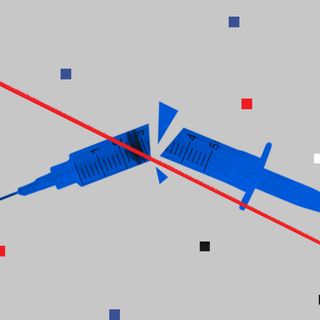Some regions in India are more vulnerable to skin cancer than others, according to a new study conducted by the Indian Council of Medical Research (ICMR).
Published in the Journal of Cancer Research and Therapeutics, the study analyzed data from the Population-Based Cancer Registry of India. It divided different regions of the country into six categories — the “North” comprised Delhi and Patiala; “South” included Bengaluru, Chennai, Kollam, and Thiruvananthapuram. Bhopal constituted the “Central” part; the “East” comprised Kolkata, the “West,” Mumbai, Nagpur, Pune, Ahmedabad, and Barshi. Lastly, the “Northeast” included Cachar District, Kamrup Urban, Manipur, Mizoram, Nagaland, Meghalaya, Sikkim, and Tripura).
The authors classified skin cancer, too, into two categories — melanoma and non-melanoma skin cancers.
Melanoma is considered the “most serious type” of skin cancer and occurs when melanocytes or cells that color the skin become cancerous. Reportedly, India witnesses more than a million cases of melanoma per year.
Non-melanoma skin cancer, as the name suggests, is all other forms of skin cancer. But, globally, basal cell carcinoma and squamous cell carcinoma are considered the most common ones in the broad category.
The report found the incidence of skin cancer in India to be much lower than in other parts of the world. For instance, in the Western Pacific region, the incidence of non-melanoma skin cancer is 225.4 among men and 68.6 among women — for every 1,00,000 people.
In India’s Northeast, which the study found to have the highest incidence of skin cancer, it was merely 5.14 for males and 3.98 for females. Males in the East, however, had a slightly greater incidence of 6.2.
Related on The Swaddle:
Rising Pollution in the Ganges May Lead to Neurological Diseases: Study
Similarly, compared to global statistics, the researchers found India to have a low incidence of melanoma. Again, the overall incidence in the Western Pacific region is 36.9, and in Europe, it is 31.7. But in India’s North, which led the country in melanoma incidence, it was just 1.62 for males and 1.21 for females.
On the one hand, the overall low incidence of skin cancers in India was heartening. On the other hand, the researchers were concerned about greater incidences stemming from just three regions and sought to investigate the cause.
In conclusion, they pegged the higher incidence in the North and the East to arsenic exposure along the Ganges basin. In combination with genetic predispositions, arsenic is already considered a contributing factor for skin cancer. In addition, it’s also known that arsenic-laden water in the region has been poisoning millions of Indians for years.
“[Arsenic water contamination] affects an estimated 50 million people in India alone, as well as people in parts of Bangladesh, Nepal, and Tibet… In some places, arsenic levels reach over 300 times the safe levels prescribed by the World Health Organization,” Scroll.in reported last year.
However, in the Northeast region, the cause behind the high incidence is different — exposure to ultraviolet B radiation. The researchers believe that some of the skin types prevalent in the area and the increased UV radiation it experiences are behind the high incidence. Compared to the world, the incidence may be low. Still, given that the region already suffers from an increased overall cancer burden and a vast disparity between its diagnosis and treatment, the present study’s findings add to the woes.
In conclusion, despite an overall low incidence, genetic factors — alongside arsenic and UV exposure — have made some segments of India’s population vulnerable to different forms of skin cancer.




